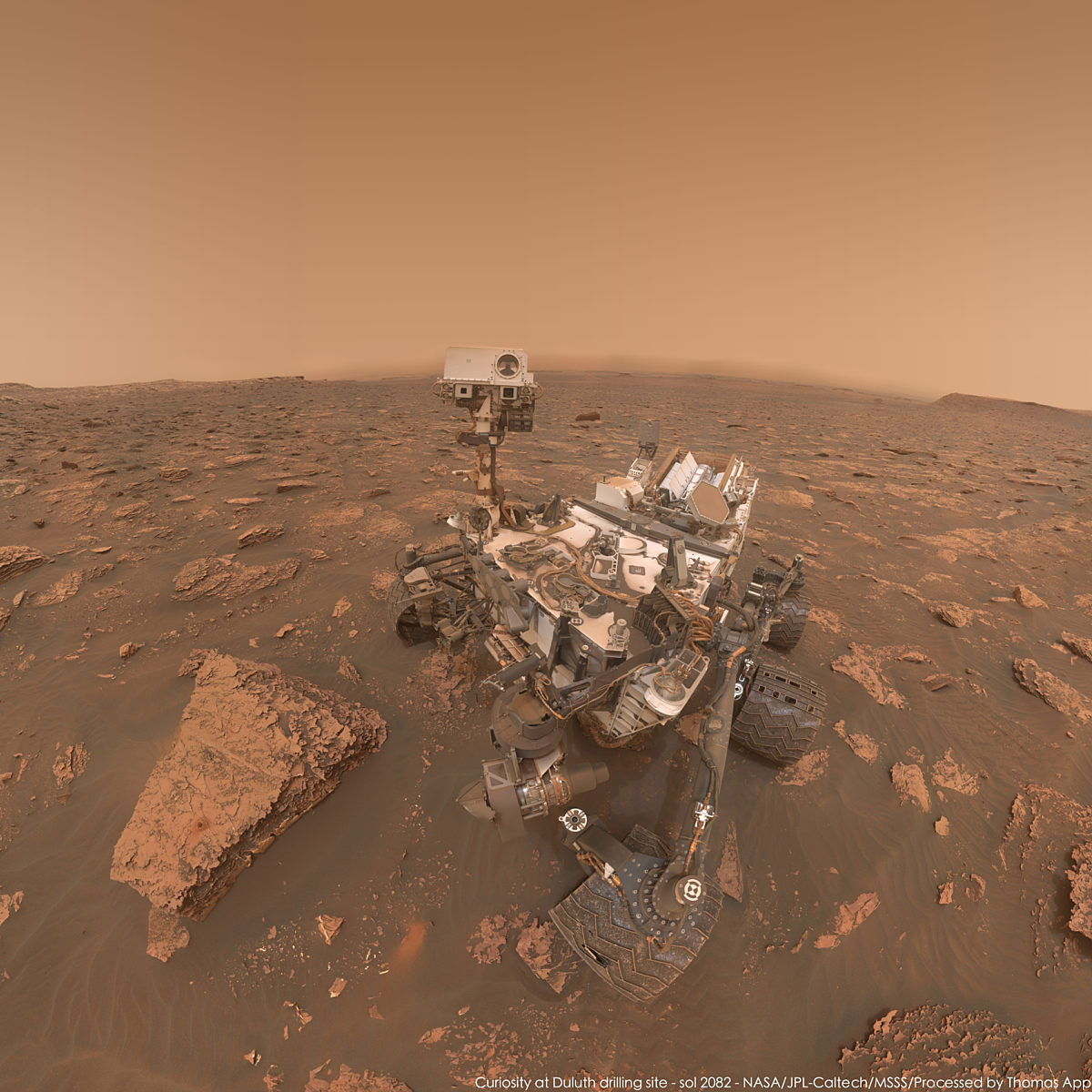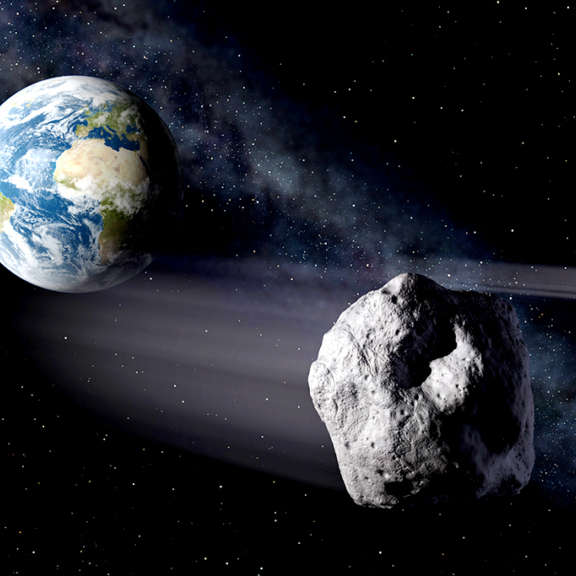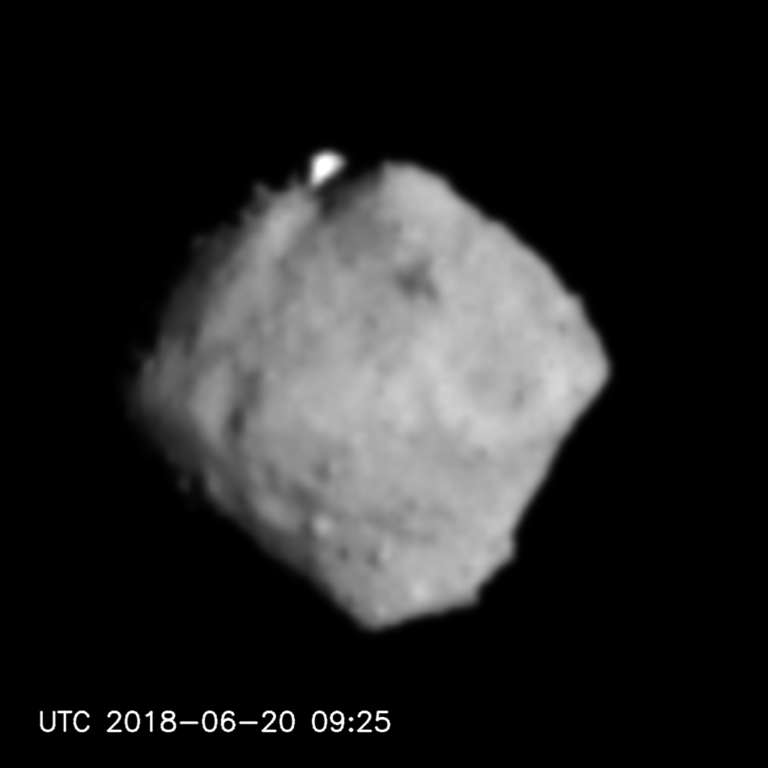All
All
Stories, updates, insights, and original analysis from The Planetary Society.
Let's check in on The Planetary Society's asteroid hunters
The Shoemaker NEO Grant program funds advanced amateur astronomers who help determine if nearby asteroids will hit Earth. Here are some collected reports from our asteroid hunters.
Curiosity update, sols 2027-2092: Return to drilling at Duluth, sciencing the dust storm
Hooray! Curiosity has triumphantly returned to drilling with a successful drill and delivery to its lab instruments at a site named Duluth. It's now studying the dust storm as it drives to new drill sites on Vera Rubin ridge.
Hayabusa2 arrived at Ryugu, so I can make comparisons of asteroid scales!
On 26 June 2018, Hayabusa2 arrived at its target asteroid, Ryugu. In a very brief status update, I present comparisons of Ryugu to other previously visited asteroids and comets.
Will an asteroid hit Earth? Your questions answered.
The Planetary Society presents a list of Frequent Asteroid Questions (FAQs).
Hayabusa2 update: New views of Ryugu and corkscrew course adjustments
Ryugu has continued to grow in Hayabusa2's forward view, resolving into a diamond-shaped body with visible bumps and craters! They've done hazard searches, optical navigation imaging, and measured the rotation rate at 7.6 hours.
New report explores threat from near-Earth asteroids
How dangerous are near-Earth asteroids, and what will we do if we find one headed toward Earth?
Rotatin' Ryugu!
Hayabusa2 continues to approach asteroid Ryugu, revealing the 900-meter-wide world in all its glory.
Dawn Journal: Spiralling Down
Propelled by the perfect combination of xenon ions, hydrazine rocket propellant and adrenaline, Dawn is on the verge of its most ambitious exploits yet.
The Mars Exploration Rovers Update Special Report: Opportunity Pummeled by Massive Dust Storm, Hunkers Down to Sleep
Entrenched in the west rim of Endeavour Crater, veteran robot field geologist Opportunity is hunkered down in Perseverance Valley in a kind of hibernation mode.
How China's lunar relay satellite arrived in its final orbit
It took 24 days for Queiqiao to reach an Earth-Moon L2 halo orbit.
Favorite Astro Plots: The Pyroxene Quadrilateral
Petrology is a field of science in which scientists study the compositions of rocks and minerals and interpret their geologic history. A common graph petrologists use is the “pyroxene quadrilateral.” These graphs, like photos of space, can reveal an understanding of the remotest parts of the solar system.
NASA's 2019 Budget Takes Shape
The Senate and House have now released details of how they would fund NASA in 2019. Check out the good, bad, and ugly in these proposals and learn what happens next.
Hayabusa2: Ryugu takes shape
Hayabusa2 is now less than 1000 kilometers away from Ryugu, and the tiny asteroid is beginning to betray its shape.
Chinese satellite snags new views of Earth from lunar orbit
See the world through the eyes of Longjiang-2.
Get ready for OSIRIS-REx at Bennu! ...but be patient.
NASA's OSIRIS-REx will get the first sight of its target Bennu in August and go into orbit in December.
Meet MMX, Japan's sample return mission to Phobos
NASA is providing an instrument for the mission, which will try to uncover the origins of Phobos and Deimos.
Reaching Higher for Space
We humans have always looked to the night sky and pondered our place in the cosmos.
A Planetary Vacuum Successfully Takes a Rocket Ride
Rocket science met planetary science in the California desert when PlanetVac, a new planetary surface sampling technique, was successfully tested on a Xodiac rocket.
Hayabusa2's Approach phase has begun with a new photo of Ryugu!
On June 3, Hayabusa2 ended use of its ion engines, for now, and is coasting the remaining distance toward Ryugu. It's using an optical navigation camera to image the asteroid's position against a field of background stars to help it navigate.
NASA is beloved; the Moon, not so much
A new poll shows broad support for space exploration in the United States. But sending astronauts to the Moon ranks as the lowest priority among the public.


 Explore Worlds
Explore Worlds Find Life
Find Life Defend Earth
Defend Earth


 Sun
Sun Mercury
Mercury Venus
Venus Earth
Earth Mars
Mars Jupiter
Jupiter Saturn
Saturn Uranus
Uranus Neptune
Neptune Small Bodies
Small Bodies
















